World of a difference: Star wrestler Inam believes Pakistan should learn from USA
Comparing talent development strategies in Pakistan and USA, the champion grappler told Nukta in an interview that the U.S. approach to developing athletes is far more advanced and science-based.

Alam Zeb Safi
Correspondent Nukta
Alam Zeb Safi is a sports journalist, having served in the capacity for 25 years. Covered so many international sports events on foreign soil also including England and Australia.
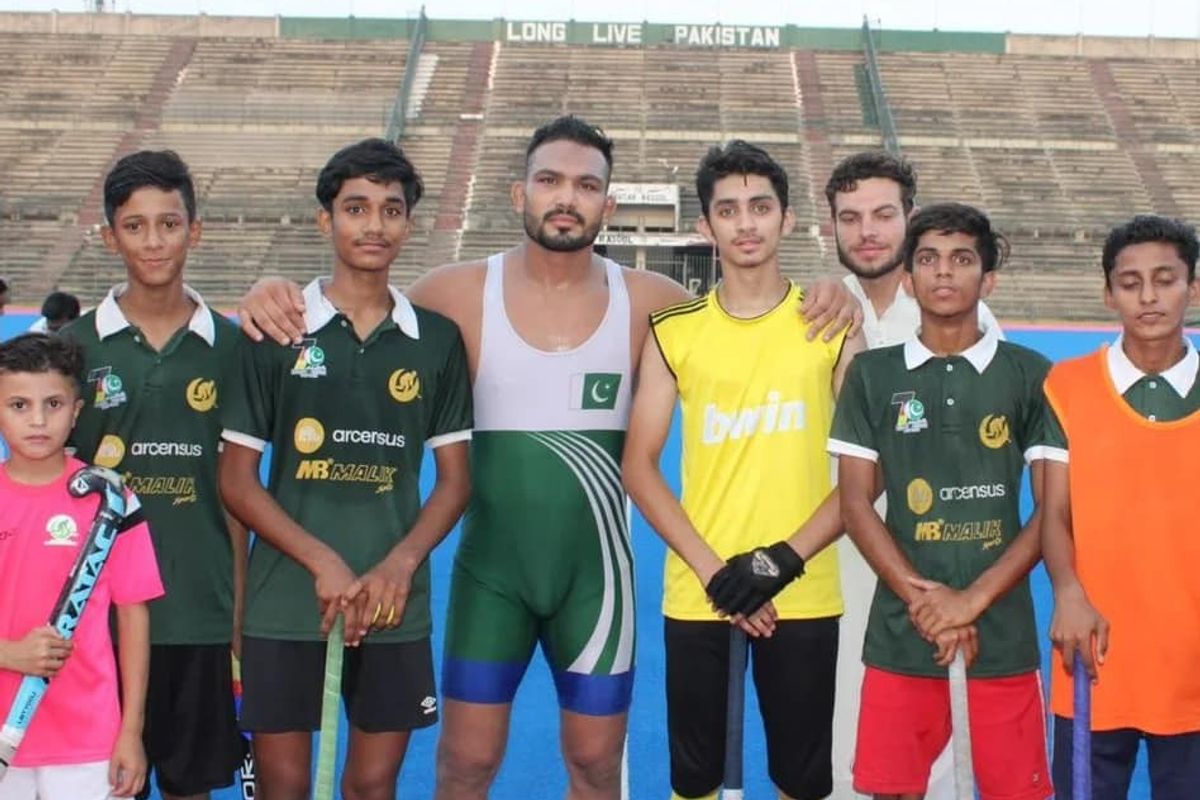
Pakistan wrestler Inam Butt with young hockey players at the National Hockey Stadium in Lahore.
Facebook/pakwrestler
Pakistan’s top wrestler, Muhammad Inam Butt, recently went to the United States for a coaching course.
The visit turned out to be quite an eye-opener for the champion grappler.
During his time there, Inam observed the U.S. sports system closely and shared his insights with Nukta in an exclusive interview, revealing stark differences between the ways Pakistan and the U.S. nurture sports talent.
Inam explained that the U.S. approach to developing athletes is far more advanced and science-based. He highlighted how in the U.S., children are introduced to sports at an early age through engaging, fun activities to keep them interested.
“In the U.S., they get kids involved in sports from a young age in a playful environment to prevent boredom,” Inam said.
He said that in the city of Rolla, a policy mandates 45-minute training sessions focused on games that are fun, and the training approach is backed by extensive research.
According to Inam, research in the U.S. has found that many young champions, particularly those between 10 and 17 years, struggle to sustain success at the Olympic level. This led to a model that emphasizes fun and skill-building up to age 12, with minimal training intensity. For children under 12, there is just one expectation: “Be available.”
Inam explained that as athletes grow, they receive structured guidance in basic skills and techniques but with less focus on physical strain until they’re older.
He also shared that the U.S. emphasizes long-term athletic careers rather than just winning youth medals.
"They aim for Olympic golds, not under-17 trophies," he said, adding that young athletes are encouraged to commit to sports as part of a healthy lifestyle.
Coaching system
In the U.S., club-based coaching is strong, with a well-qualified staff providing tailored training.
Inam observed one club with 15 coaches working with 125 athletes, which ensures each athlete gets the attention they need.
He added, "Coaching qualifications are taken seriously, with coaches needing specific certifications like bronze, silver, or gold-level training before they can work with young athletes. Parents’ role is limited to cheering, and they aren’t allowed on the training mats.”
U.S. coaches receive significant support from local communities, clubs, schools, and sponsors, allowing for a well-supported coaching structure.
Training approach
The U.S. training model is highly individualized and scientific, with specific training plans and assessments for each athlete.
"Each athlete undergoes tailored conditioning, speed, and strength tests," Inam said.
“They segregate their athletes' pool into small groups having similar issues like skills, speed, conditioning, stamina and they work on them to better them in those zones. Everything is calculated. They have kept various apps and if a coach is abroad through that app he or she sends training designs to the particular athletes,” he added.
He was impressed by how each athlete had a personalized training plan and how detailed their knowledge of nutrition, goals, and preparation was, even at a young age.
Inam also visited the Olympic Training Center in Colorado, a dedicated facility on an airbase with extensive resources for athletes, including a wide variety of foods for optimum nutrition.
Sponsored by Coca-Cola, the center even included Paralympic information displayed throughout.
Focus on diet
“Their athletes consume thousands of different food items, and everything is meticulously planned for their performance,” he shared.
The U.S. sports nutrition setup is overseen by specialists. Inam explained that athletes scan their food to ensure it meets their dietary needs, and a professor provided him with a lecture on the latest in sports nutrition.
He met a PhD doctor responsible for the dining hall who monitors the athletes’ meals. This doctor even traveled to the Paris Games to ensure proper nutrition options were available.
Rehabilitation facilities
The U.S. has advanced rehabilitation centers with top-notch equipment.
"Their focus is on prevention," Inam said. Athletes rarely face injuries due to a well-balanced training approach.
In Rolla, he learned that no athlete had sustained an ACL injury in nine years, and he was told that injuries could result in serious repercussions, including lifelong compensation for the athlete.
Inam shared that his own training plan was criticized as too intense, contributing to higher injury rates in Pakistan.
“I shared my training plan which they declared as rubbish. I was told that in Pakistan we undergo severe training which is not good for the athletes and it gets the athletes injured. I was told in the US they don’t put extra load on their athletes and that is why the injury rate is nominal in the US,” he said.
“They told me that their low-injury approach is based on not overloading athletes,” he explained, contrasting it with Pakistan’s tendency to overwork players, often leading to injuries.
In Colorado, he observed a facility where training room temperatures are adjusted to mimic the climates of upcoming competition locations. This allows athletes to acclimate to conditions they’ll face abroad.
“They not only control training but also their environment,” he concluded.


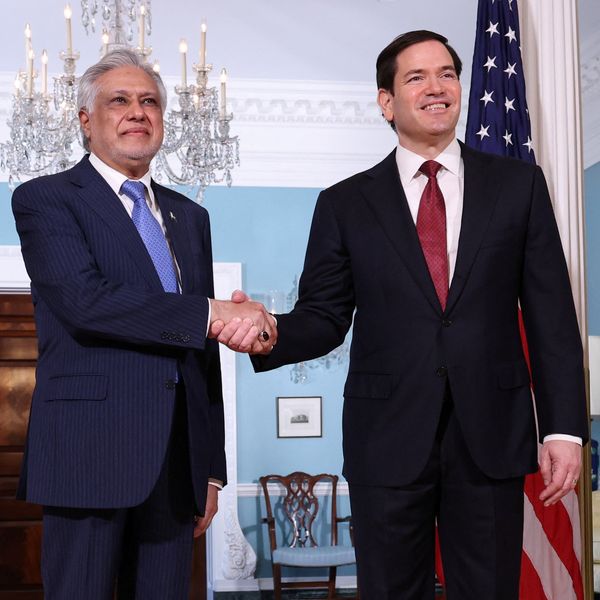
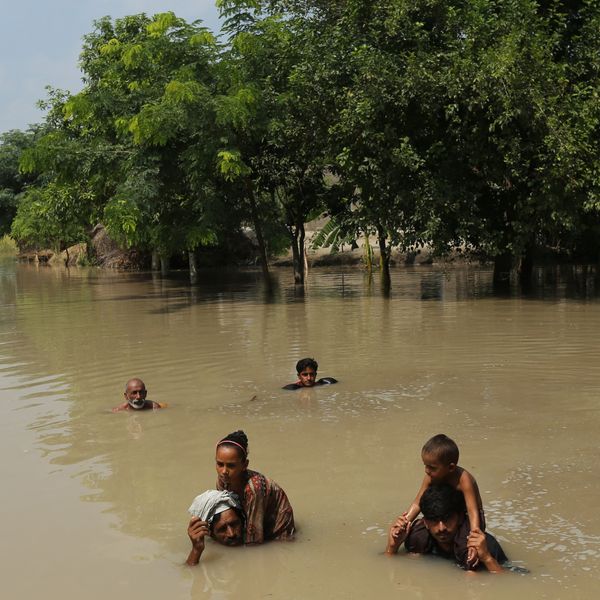
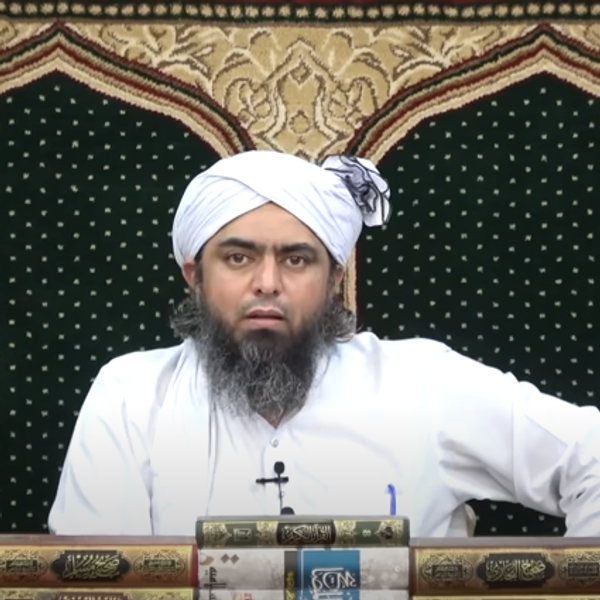
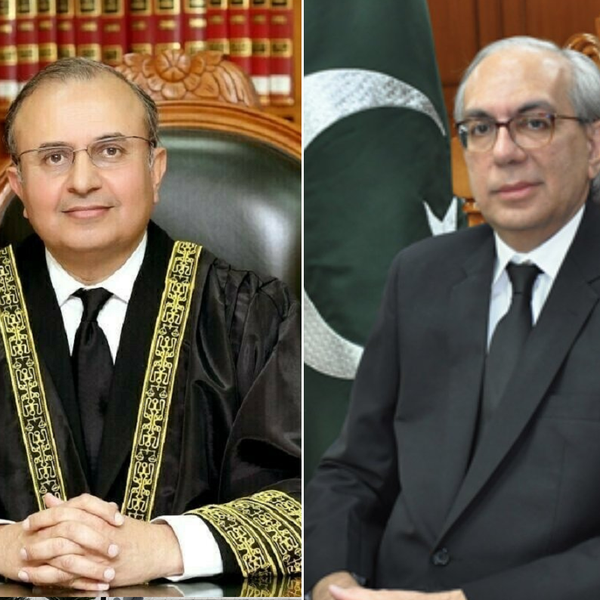




Comments
See what people are discussing